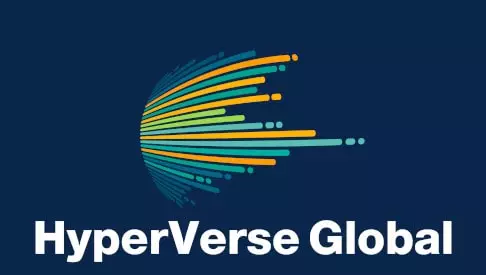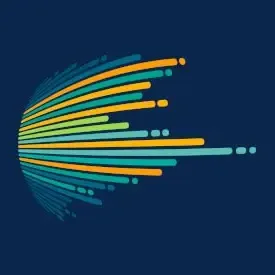Data Analysis and Processing Phase
The data processing phase is a stage in a data pipeline that involves performing operations on the data to extract insights or generate results. During the data processing phase, a number of operations may be performed on the data, including:
- Querying: Querying involves running SQL or other types of queries on the data to extract specific subsets or insights.
- Analyzing: Data analysis involves using statistical techniques to understand patterns, trends, and relationships in the data. This may involve running tests, calculating descriptive statistics, or creating visualizations to help understand the data.
- Modeling: Modeling involves using machine learning algorithms to generate predictions or insights from the data. This may involve training a model on the data, fine-tuning the model’s parameters, and evaluating the model’s performance.
- Visualization: Visualization involves creating charts, graphs, maps, or other types of visualizations to help understand and communicate the insights gained from the data.
- Transformation: The data may need to be transformed or cleaned in some way before it can be used for further analysis or processing. This may involve converting data into a different format, filling in missing values, or removing outliers.
- Enrichment: Data enrichment involves adding additional data to the existing data set to create a more complete or comprehensive view of the data. This may involve joining data from multiple sources or adding external data sources.
- Integration: Data integration involves combining data from multiple sources or systems into a single view or dataset. This may involve creating a data warehouse or data lake to store the data.
- Automation: Automation involves setting up processes or scripts to perform data processing tasks on a regular basis, without the need for manual intervention. This can help ensure that the data processing pipeline is reliable and efficient.
Data Visualization and Reporting
Data visualization and reporting are important elements of a data pipeline, as they allow users to understand and make sense of the data being collected and processed. Data visualization involves using charts, graphs, and other visual tools to represent data in a way that is easy to understand and interpret, while reporting involves presenting the data in written or verbal form, often accompanied by visualizations.
Effective data visualization and reporting can help users identify trends, patterns, and anomalies in the data, and can facilitate decision-making by providing a clear and concise summary of the data. In a data pipeline, data visualization and reporting can be used at various stages to help understand the data as it is being collected, processed, and analyzed.
For example, dashboards can be used to display real-time data in a way that is easy to understand, and reports can be generated to provide a detailed summary of the data and any insights or conclusions that have been drawn from it. By using visualization and reporting tools, organizations can gain a deeper understanding of their data and use it to make informed decisions.
Data Reporting
There are several ways data can be reported:
- Tables: Data can be presented in a tabular format, with rows and columns used to organize and display the information.
- Graphs: Graphs are a visual representation of data that can be used to show trends and patterns. There are several types of graphs, including line graphs, bar graphs, and pie charts.
- Charts: Charts are similar to graphs, but can be used to display more complex data sets with multiple variables.
- Maps: Maps can be used to display geographic data and can be interactive or static.
- Infographics: Infographics are visual representations of data that use a combination of text, charts, and graphics to present information in an easy-to-understand format.
- Dashboards: Dashboards are interactive tools that display data in real time and allow users to filter and explore the data in different ways.
- Reports: Reports are written documents that provide a summary of the data and may include charts, graphs, and other visualizations to help illustrate the findings.
- Presentations: Data can also be presented in the form of a presentation, using slides or other visual aids to present the information.
Data Visualization
An important method of reporting is through visualizations. There are many different ways that data can be visualized, depending on the type of data and the insights you want to communicate. Some common ways to visualize data include:
- Line charts: Line charts are used to visualize trends over time. They are useful for showing how a value has changed over a series of time periods.
- Bar charts: Bar charts are used to compare values across different categories. They are useful for comparing the size or magnitude of different groups or categories.
- Pie charts: Pie charts are used to visualize the proportions or percentages of different categories. They are useful for showing how a whole is divided into parts.
- Scatter plots: Scatter plots are used to visualize the relationship between two variables. They are useful for showing how one variable is related to another.
- Histograms: Histograms are used to visualize the distribution of a variable. They are useful for showing the shape of the distribution and identifying outliers.
- Box plots: Box plots are used to visualize the distribution of a variable and identify outliers. They are useful for comparing the distributions of multiple groups or categories.
- Heatmaps: Heatmaps are used to visualize the density or intensity of data. They are useful for showing patterns or trends in data that may not be immediately apparent.
- Geographical maps: Geographical maps are used to visualize data that is geographically distributed. They are useful for showing how data varies across different regions or locations.
- Network diagrams: Network diagrams are used to visualize relationships between entities. They are useful for showing how different entities are connected or related to one another.
The following are a few more types of data visualizations that you may find useful:
- Bubble charts: Bubble charts are similar to scatter plots, but they use the size of the data points to represent an additional variable. They are useful for showing the relationship between three variables.
- Stacked bar charts: Stacked bar charts are used to visualize the breakdown of a whole into its parts. They are useful for showing how different categories contribute to a total value.
- Waterfall charts: Waterfall charts are used to visualize the cumulative effect of a series of positive and negative values. They are useful for showing how an initial value is affected by a series of changes.
- Sankey diagrams: Sankey diagrams are used to visualize the flow of data or material between different stages or processes. They are useful for showing how data or material moves through a system.
- Gantt charts: Gantt charts are used to visualize the progress of a project over time. They are useful for showing the start and end dates of tasks and the dependencies between them.
- Treemaps: Treemaps are used to visualize hierarchical data. They are useful for showing the relative sizes of different categories within a hierarchy and how they are related to one another.
- Chord diagrams: Chord diagrams are used to visualize relationships between different entities. They are useful for showing the connections between different groups or categories.
- Radar charts: Radar charts are used to visualize the characteristics or attributes of multiple entities. They are useful for comparing the values of multiple variables for different entities.
The following are a few more types of data visualizations that you may find useful:
- Word clouds: Word clouds are used to visualize the frequency or importance of words in a text. They are useful for identifying the most common or important words in a piece of text.
- Tree diagrams: Tree diagrams are used to visualize hierarchical data. They are useful for showing the relationships between different levels of a hierarchy and how they are connected to one another.
- Matrix plots: Matrix plots are used to visualize relationships between multiple variables. They are useful for showing how different variables are correlated and how they change in relation to one another.
- Mosaic plots: Mosaic plots are used to visualize the relationship between two categorical variables. They are useful for showing how the distribution of one variable is affected by the values of another variable.
- Parallel coordinates plots: Parallel coordinates plots are used to visualize the relationship between multiple variables. They are useful for comparing the values of numerous variables for different entities.
In conclusion, data visualization and reporting are important elements of a data pipeline, as they allow organizations to gain a deeper understanding of their data and use it to make informed decisions. By using visualization and reporting tools, users can identify trends, patterns, and anomalies in the data, and can facilitate decision-making by providing a clear and concise summary of the data.
In a data pipeline, data visualization and reporting can be used at various stages to help understand the data as it is being collected, processed, and analyzed. Effective data visualization and reporting can be achieved by using the right tools and techniques, and by designing visualizations and reports in a way that is clear, concise, and easy to understand.
By leveraging the power of data visualization and reporting, organizations can gain valuable insights into their data and use it to drive business growth and success.



Comments are closed